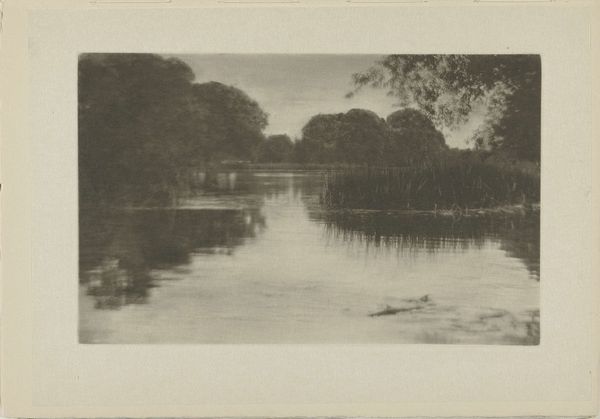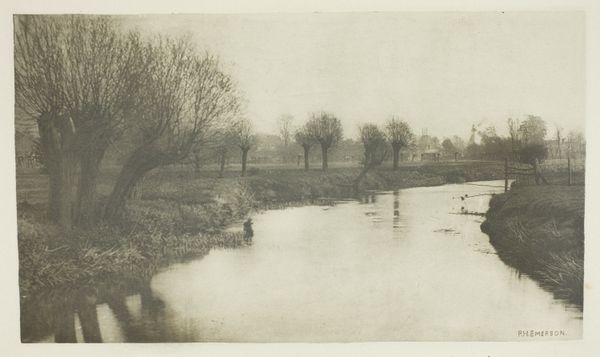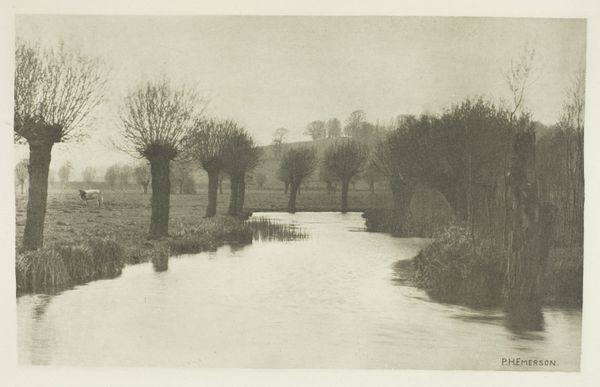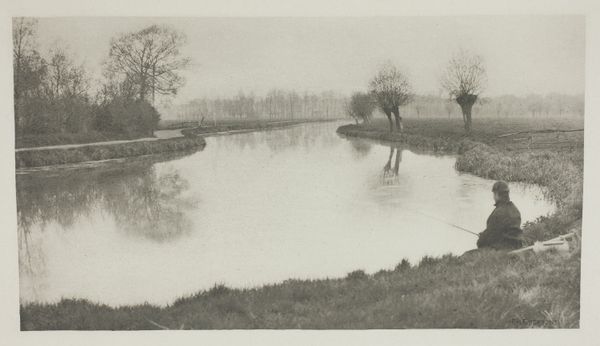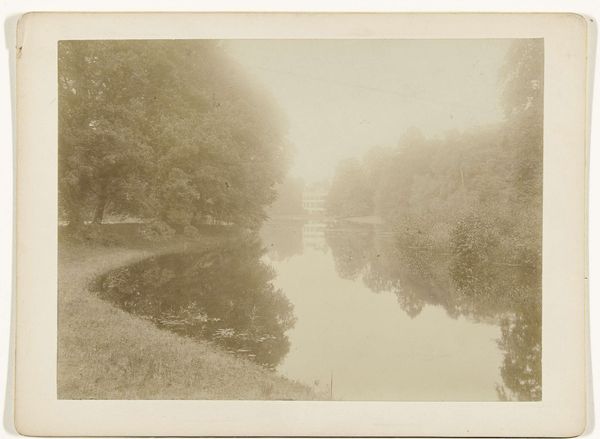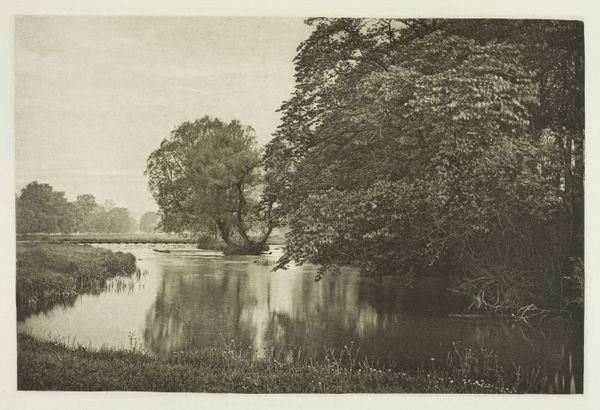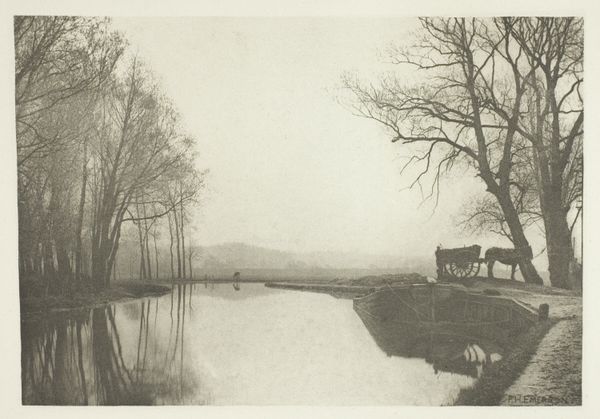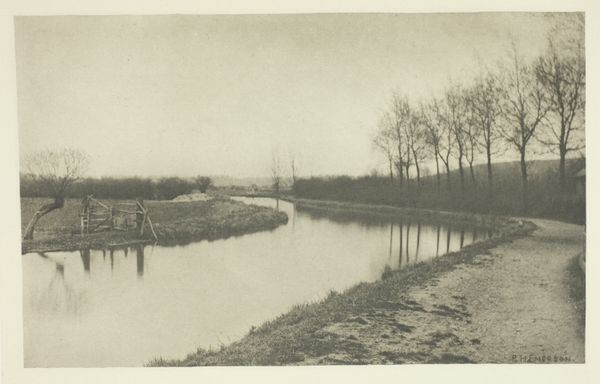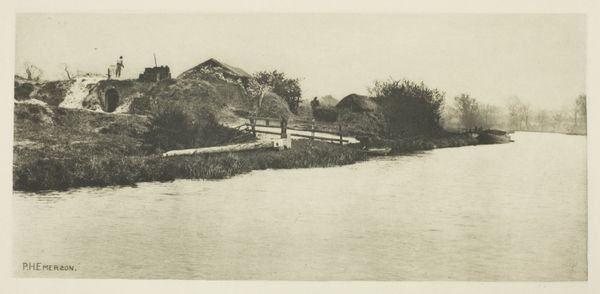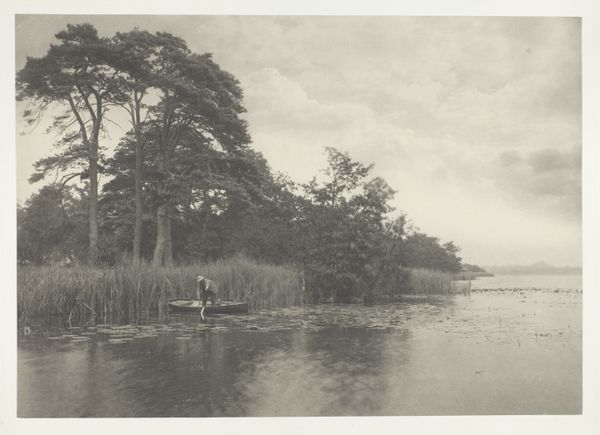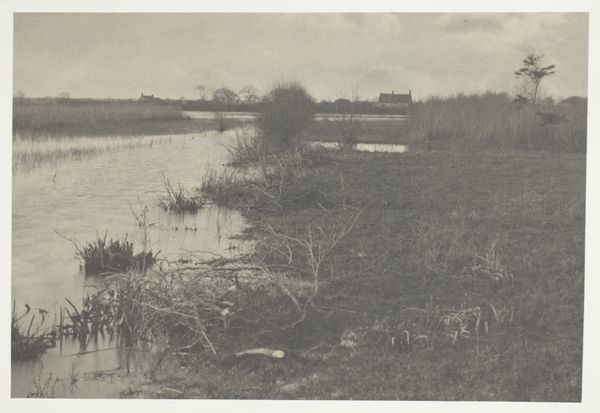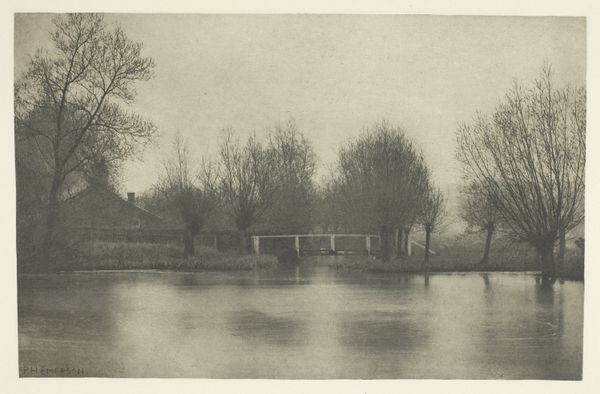
photography, gelatin-silver-print
#
16_19th-century
#
pictorialism
#
landscape
#
photography
#
gelatin-silver-print
Dimensions: 12.6 × 20.3 cm (image); 14.7 × 21.6 cm (paper); 24.2 × 31.9 cm (album page)
Copyright: Public Domain
Curator: Let's discuss "Footbridge Near Tottenham", a gelatin silver print created circa the 1880s by Peter Henry Emerson, currently housed at The Art Institute of Chicago. The work exemplifies pictorialism within landscape photography. What are your first thoughts? Editor: The muted tones immediately evoke a sense of serene melancholy. The soft focus lends the scene an ethereal, dreamlike quality. There’s a figure on the bridge, seemingly lost in thought. Curator: Indeed. Pictorialism often sought to elevate photography to the level of fine art, moving beyond mere documentation. Consider the composition—the winding river, the strategic placement of trees, leading our eyes to the small figure. The gelatin silver printing process itself allows for these nuanced gradations of light and shadow. Editor: The bridge becomes a symbol of transition, doesn’t it? Water, in many cultures, represents the subconscious, the flow of time. The figure, framed by the bridge's structure, feels poised between realities—the known and the unknown. Notice how Emerson softens edges; nothing feels sharp or defined, heightening that symbolic uncertainty. Curator: Quite astute. Moreover, we can analyze how Emerson directs light in a specific hierarchy. The subtle gradation across the water indicates he employed certain darkroom manipulation techniques typical of pictorialists. The horizontal emphasis—bridge, river, distant horizon line—reinforces pictorial harmony within a seemingly simple construction. Editor: I can't help but feel that figure echoes the 'everyman', quietly contemplating nature's enduring rhythm, regardless of his era. He is at once there and almost gone. Curator: An evocative idea! Emerson saw himself as a documentarian, but the artistry inherent within each photographic decision elevates this from objective record to aesthetic statement, provoking deeper consideration of human scale within this natural scene. Editor: Well, regardless, pondering Emerson's image transports you momentarily, providing welcome solace amidst contemporary concerns. Curator: Precisely; analysis such as ours enhances appreciation of process meeting poetic contemplation, doesn't it?
Comments
No comments
Be the first to comment and join the conversation on the ultimate creative platform.
